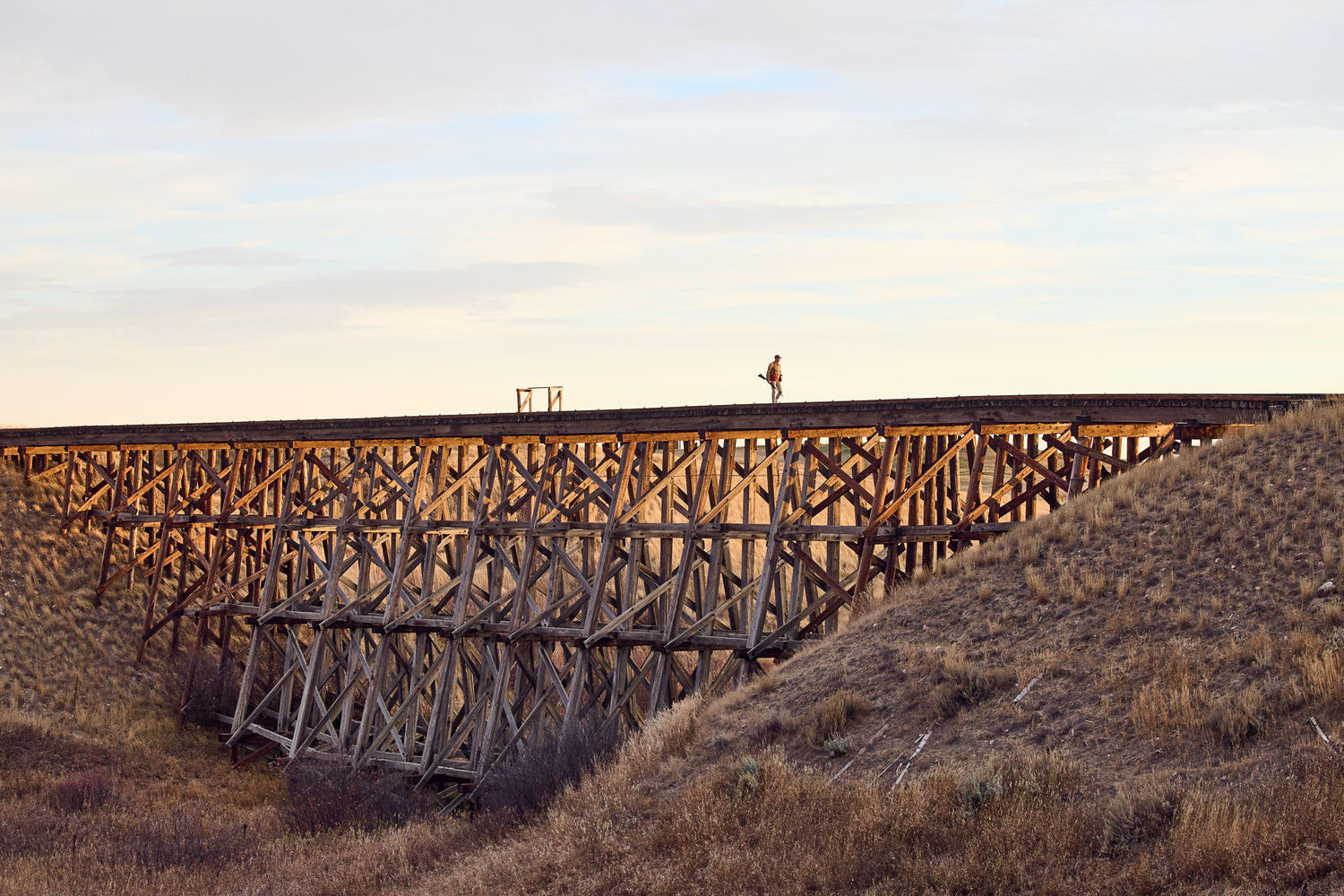
Fall 2023 Road Trip: Saskatchewan
Jemison Thorsby
By Radcliff Menge
Better traveled outdoorsmen with far more experience in the field and at the pen have written about Saskatchewan’s annual waterfowl migration. But even their words don’t quite fully capture the experience of chasing fall to its northern origin. The Canadian prairie we spent five days on was endless in every direction. And the sky was filled with birds.
We hunted over a shallow spring-fed pond on our first morning and saw mallards, pintails, widgeon, white-fronted geese, snows, and sandhill cranes by the thousands. The birds decoyed well, oblivious to our A-frame blind we set under a green aurora borealis. The morning was cool but not cold, with temperatures hovering around 45 degrees before sunrise and quickly warming into the mid-60s by late morning.
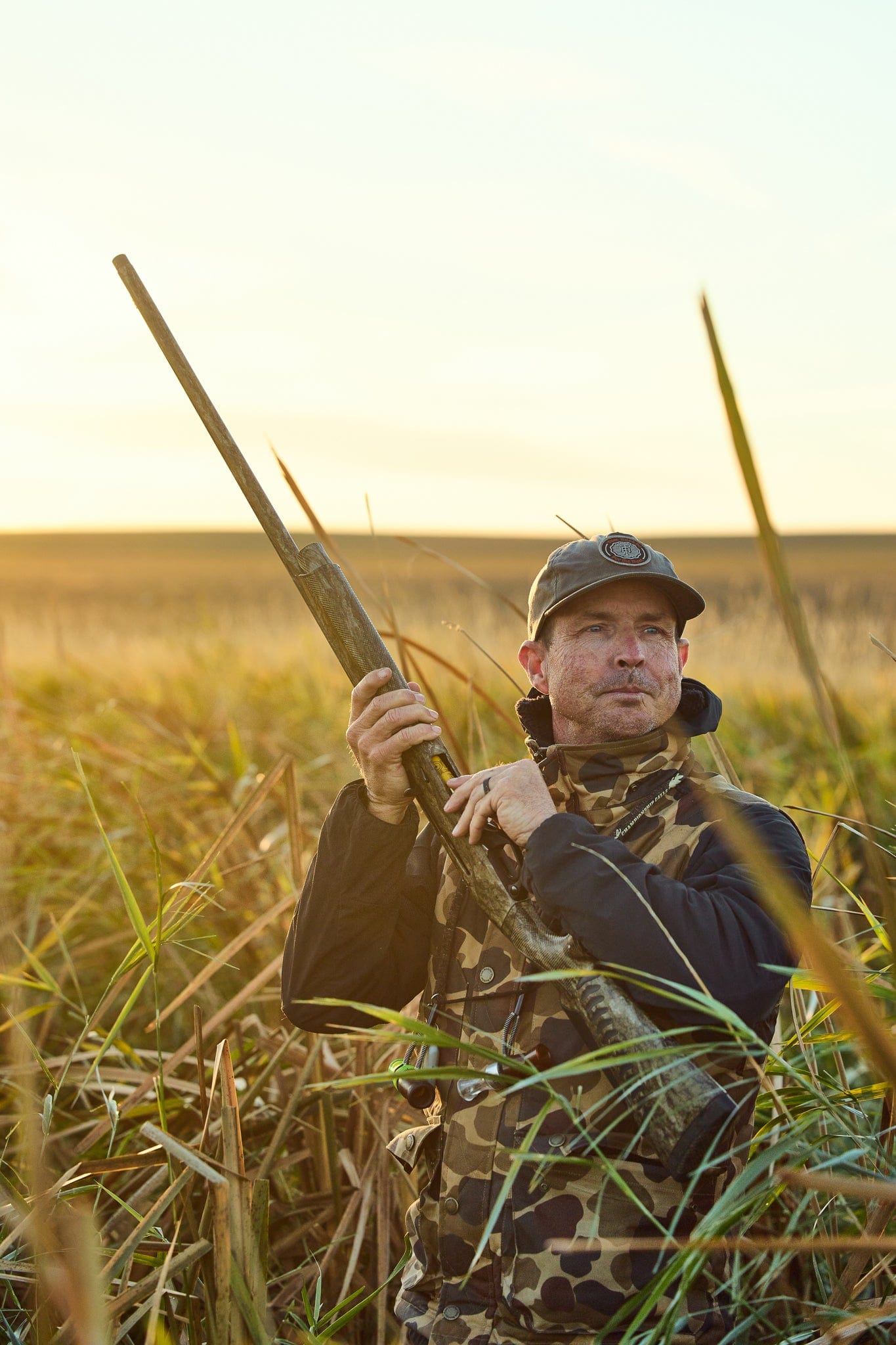
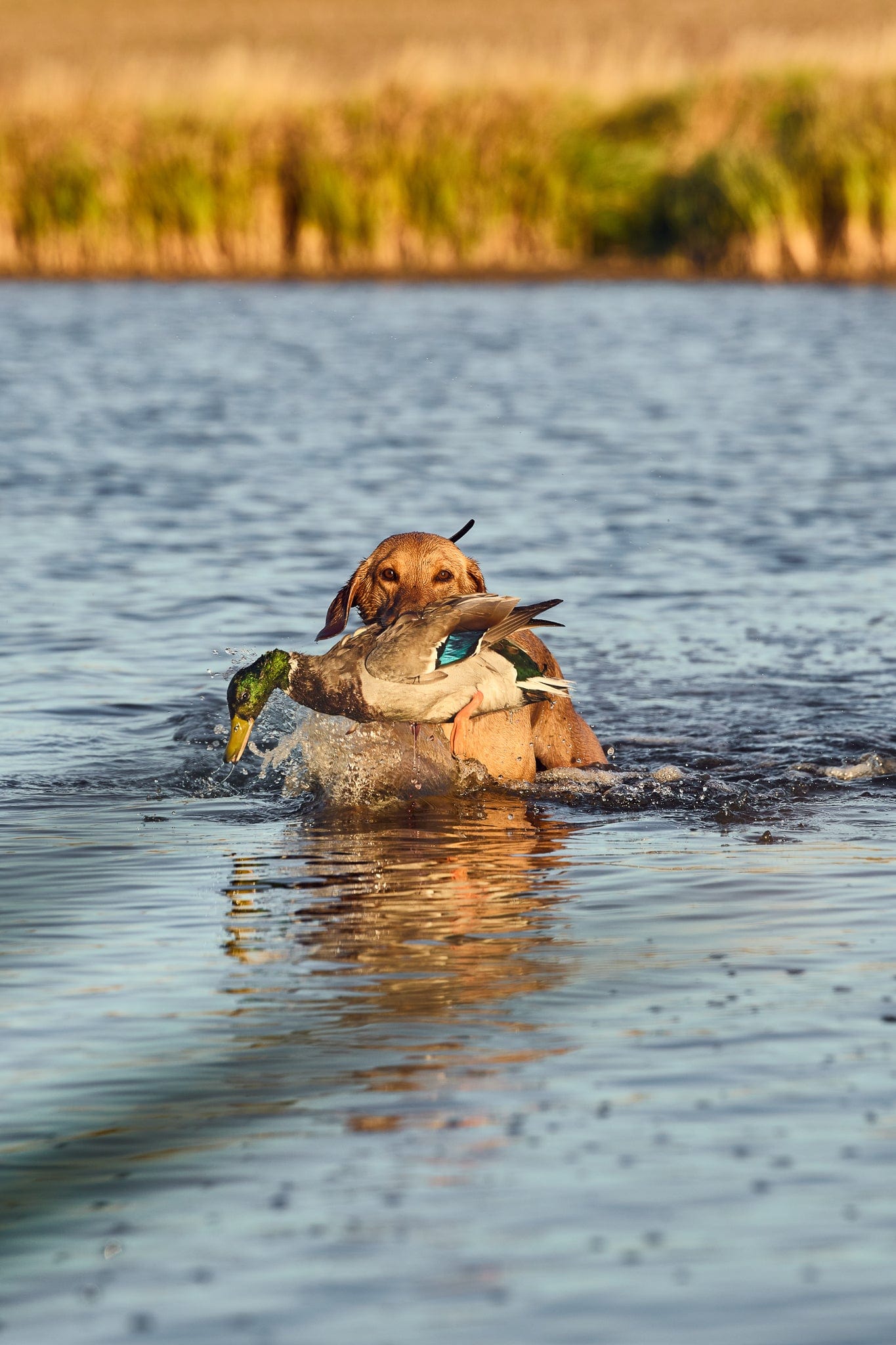
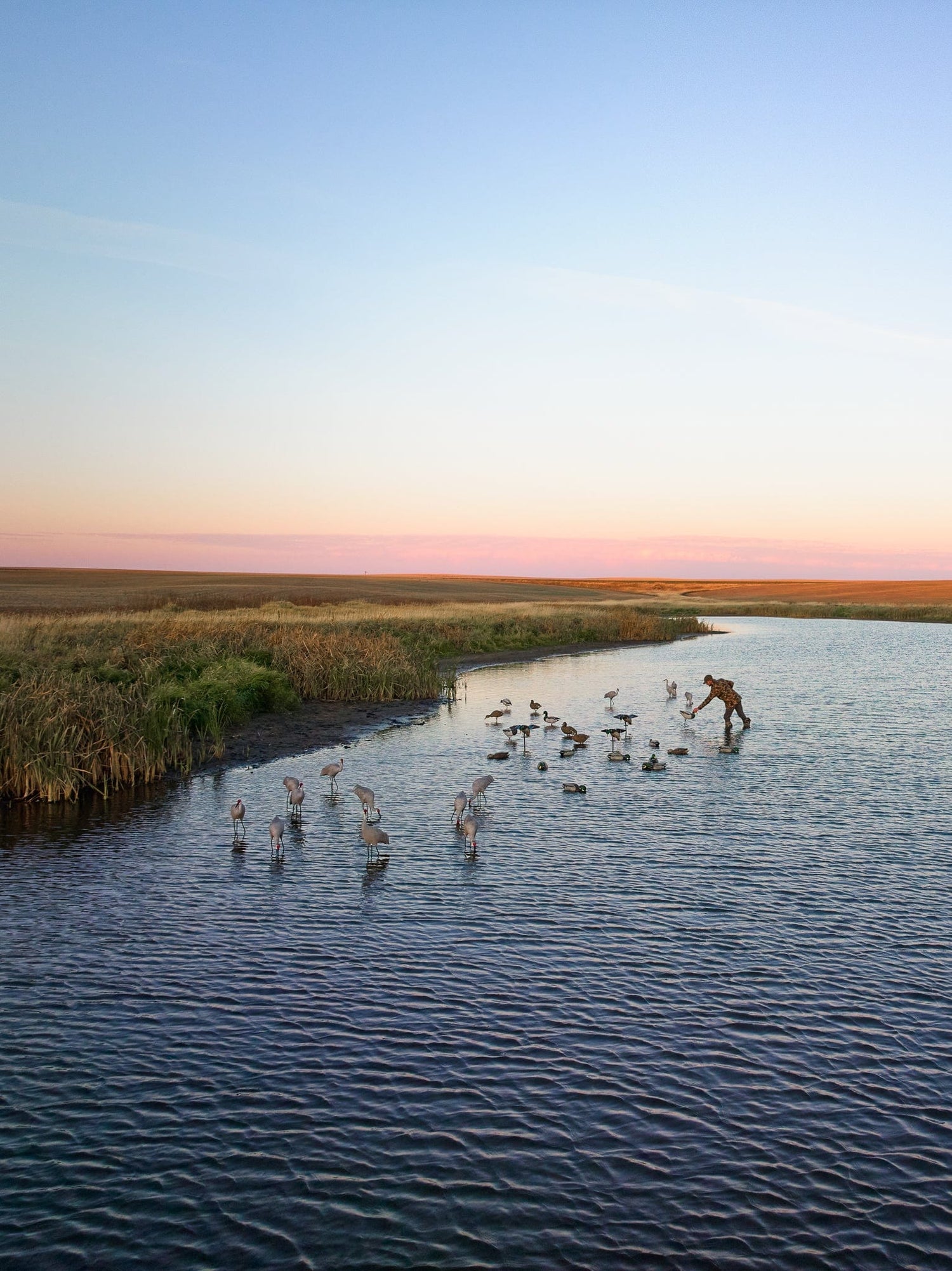
The huge range in temperatures continued for the next couple of days. The cold mornings were perfect for hunting waterfowl and testing out new additions to our fall line-up. We’ve long enjoyed a strong customer base in the Upper Midwest. To match their home turf and the grounds we were hunting in Canada, we’ve introduced new colors and camo patterns, and we’ve insulated two new traditional waxed canvas outerwear pieces.
Our new Fowler Vest and Fowler Jacket, both quilted with wool, provided the perfect outer layer on our cool Canadian mornings. The Fowler’s new wheat color matched the fallow stubble and grain fields perfectly. Paired with our Brushed Cotton Twill Shirts and Rutledge Double-Front Canvas Pants, we were ideally layered for cool mornings. And the Fowler’s wool insulation naturally released body heat as the sun and temperatures rose throughout the morning.
Two consecutive afternoons in the mid-70s did not make for the best upland conditions. Still we pounded fence rows and old farmsteads for miles in shirtsleeves looking for Hungarian Partridge and Sharp Tailed Grouse. Our Uplander shirts were preferred and breathed great on long walks, although it was so warm that even our Tidewater performance shirts would have worked too. Half the group opted for Strap Vests to haul shells and water, while the other half carried our new Blind Bags as traditional crossbody speed bags. We managed to put a few birds in the bag in the afternoon, but the morning waterfowl hunting was dramatically better.
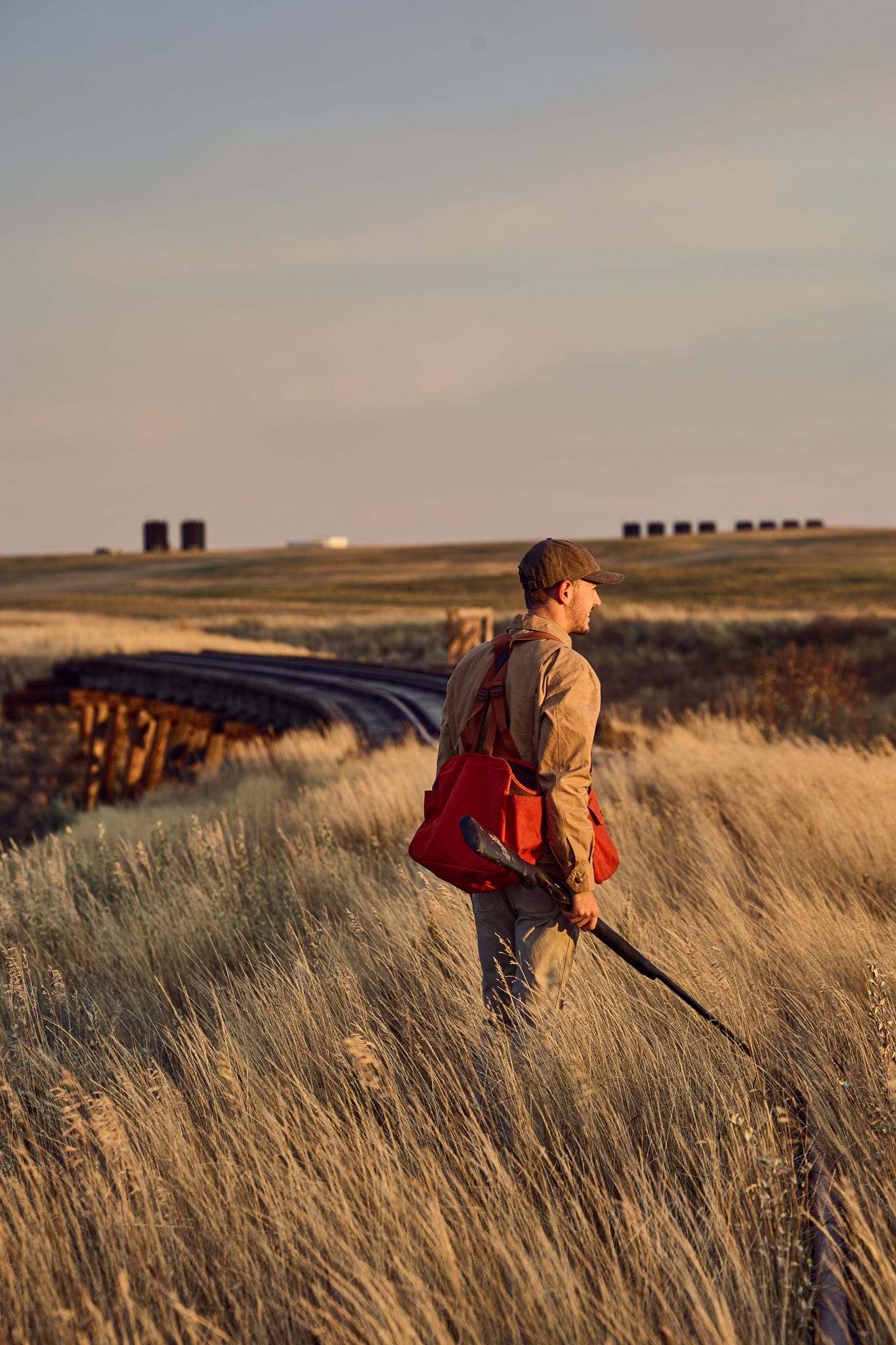
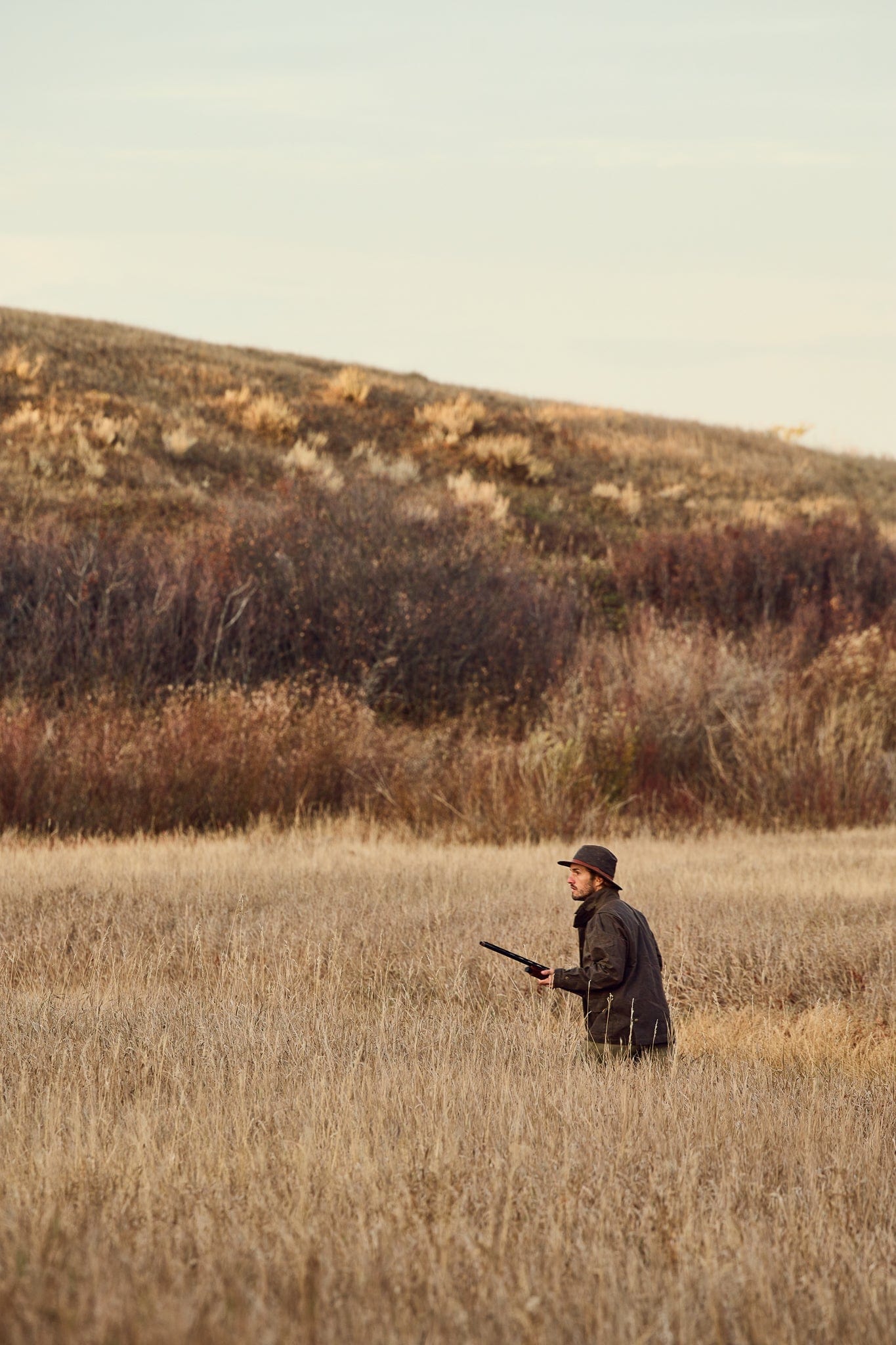
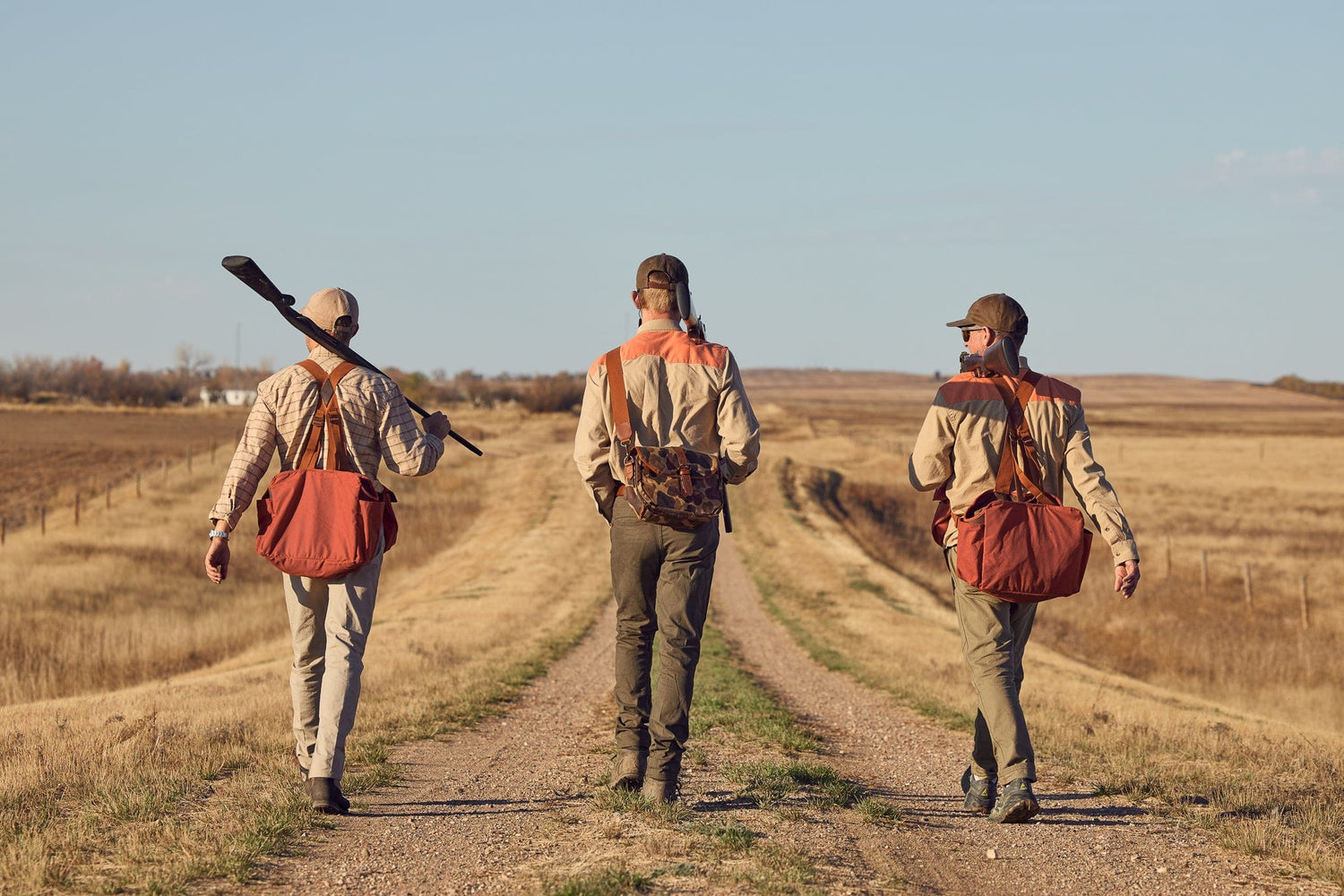
On our last day, we vowed to settle the upland score and take advantage of the cool morning weather to hunt long draws and dry creek beds. Winds were gusting heavily, so most of the group wore Tensaw and Shallowford Jackets, with a few in insulated Loudoun Vests and Brushed Cotton Twills. These were the right layers given how much terrain we were covering, but if we’d have been sitting in a blind waiting on ducks the insulated Fowler pieces would have been ideal.
Our new Rutledge Double-Front Canvas Pants were the preferred pants for the group for the whole trip, mornings and afternoons. The Rutledge’s 8.5oz canvas is the perfect blend of durable and warm without being too bulky. Articulated knees and 2% stretch made crouching, sitting, and hiking long distances a breeze, while the cut fit comfortably into a pair of rubber knee boots in the morning and over a pair of upland boots in the afternoon. All in all, we’ve been excited to see these pants hit the field for the first time this year and extremely pleased with how comfortable they are.
In addition to the exceptional hunting, we were lucky to be joined by Uruguayan chef Stefano Mastracchio who prepared outstanding meals from game taken the same day. We’re excited to share some of his recipes and, perhaps more importantly, a few technique tricks that produced spectacular results.
If you are thinking about heading to Canada in the fall yourself, there are a number of considerations about how to go. A recent episode of the Standard Sportsmen Podcast tackled many of these issues. We highly recommend the conversation among lifelong waterfowlers Brent Birch, Cason Short, and Lee Kjos. It’s a wide-ranging discussion on the evolution of waterfowling on the northern prairies, conservation, and moderation.